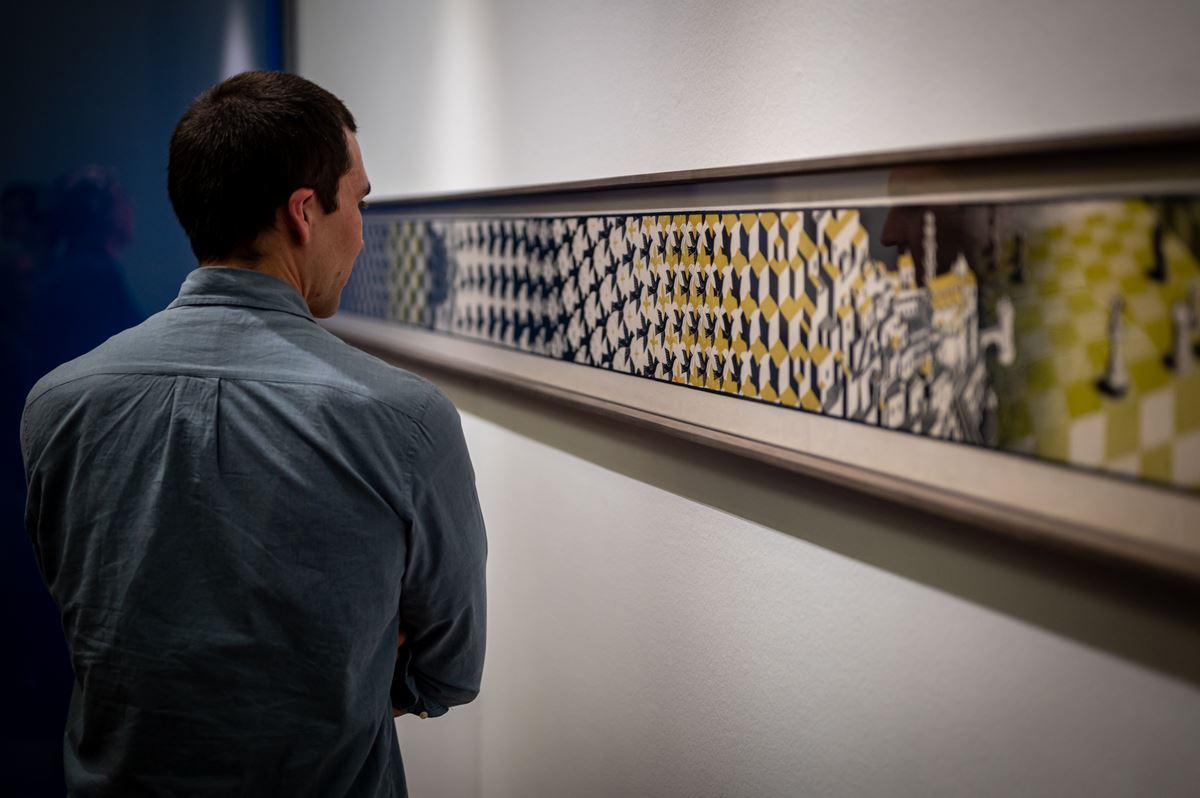a.s.r. and Aegon bring together art collections to form Stichting Kunst & Historisch Bezit a.s.r. & Aegon
Aegon Ltd. has officially signed over Aegon's art and historical collection as a gift to Stichting Kunst en Historisch bezit a.s.r Nederland The collection will be merged with the existing a.s.r. collection to form the Stichting Kunst & Historisch Bezit a.s.r. & Aegon, which was renamed to reflect the combination. The agreement now brings more than 1,000 works of art into the ownership of the foundation and increases the total art collection to approximately 2,500 pieces.

Both collections bring together art objects around the themes of man, nature and everyday life. The collections contain primarily contemporary art by approximately 750 artists, including both established names and new talent. This includes works by Esther Tielemans, Marwan Bassiouni, Raquel van Haver, Willem Sanders and Erwin Olaf, among others, as well as more classical pieces such as the Metamorphosis II by M.C. Escher and the Synthetic Construction W1 by Joost Baljeu.
Along with art objects, the historical objects of the legal predecessors of Aegon Nederland, which has its origins in 1844, will also transfer to the Stichting Kunst & Historisch Bezit a.s.r. & Aegon. The transfer of the art collection and historical objects is part of the agreement reached between Aegon and a.s.r. in late October 2022, when the organizations announced the combination of Aegon Nederland and a.s.r. The agreement also states that Aegon Ltd. can lend artwork from the foundation, as can museums and cultural institutions.
Jos Baeten, CEO of a.s.r., said, 'Aegon Nederland's art collection is an important part of the company and its culture. A company that treasures its history has a future. With the arrival of over a thousand new art pieces, it is also fitting to adapt the name of the foundation accordingly and honor a piece of history and heritage.'
Lard Friese, CEO of Aegon Ltd, commented: 'Merging the two art collections into Stichting Kunst & Historisch Bezit a.s.r. & Aegon honors the rich history of the Aegon collection and also bridges directly into the future. Employees, customers and visitors of museums can continue to enjoy the art, which contributes to the preservation of our cultural heritage.'
-
10 Dec 2025
Lard Friese steps down from a.s.r.’s Supervisory Board
Lard Friese has decided to step down as a member of the Supervisory Board of ASR Nederland N.V. (a.s.r.) in order to fully focus on his responsibilities at Aegon Ltd. Aegon Ltd will nominate a candidate to succeed him.10 December 2025Utrecht -
9 Dec 2025
a.s.r. receives approval to use its Partial Internal Model for a.s.r. Life
The Dutch Central Bank (DNB) has approved a.s.r.’s application for the use of a Partial Internal Model (PIM) for determining required capital under the Solvency II framework for the ASR Levensverzekering N.V. (a.s.r. Life) entity. This extends the use of the PIM from the Dutch Aegon Life entities to the a.s.r. Life entity and enhances a.s.r.’s overall risk management and capital efficiency.9 December 2025Utrecht -
8 Dec 2025
a.s.r. becomes strategic partner of Groene GGZ
From 2026, a.s.r. will become a strategic partner of the Groene GGZ (Green Mental Healthcare) initiative, which emphasises the importance of nature in mental healthcare. By joining this initiative, a.s.r. underlines the relevance of nature-inclusive care. As a strategic partner, a.s.r. will collaborate with various mental healthcare providers to implement nature-inclusive care into practice.8 December 2025Utrecht



